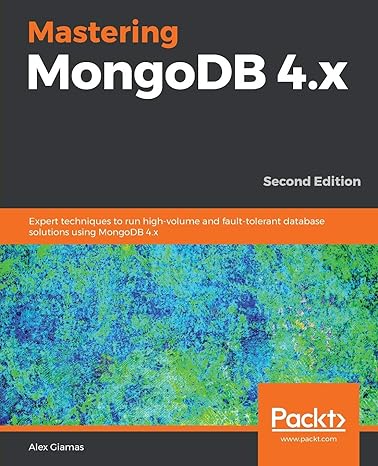Answered step by step
Verified Expert Solution
Question
1 Approved Answer
Phrase Structure Rules ( PSRs ) S NP VP ( PPloc ) ( PPtime ) NP ( Det ) ( AP ) N ( PP
Phrase Structure Rules PSRs
S NP VP PPlocPPtime
NP DetAP N PPPP
NP Name
NP Pro
VP QualAuxAuxAux V NPAPPPPP
AP Deg A PP
PP Deg P NPPP
Part A The PSRs above successfully account for the sentences below.
The letter to the editor is very unbelievable.
It to the editor is very unbelievable.
These pieces of wood are rotting.
They of wood are rotting.
Show this by doing two things. In the first box below, draw a sentence tree for to show that the PSRs can
generate it Your tree structure must show all syntactic categories phrasal lexical, nonlexical as nodes on the
tree, and it should show the constituent structure that the PSRs assign. Also, the trees must follow the rules for
wellformed trees see the Syntax lecture slides if this is unclear In the second box on the right, explain why
the rules cannot generate and Use complete sentences and make explicit reference to the syntactic
categories of these sentences and the PSRs
Tree for
The letter to the editor is very unbelievable
Explanation of ungrammaticality of
Acknowledgement: this problem is based on a similar problem developed originally by Sandra Chung.
Part B Sentence below is ambiguous, but is unambiguous. can have a editor as addressee
meaning, where I read the letter that was addressed to the editor, but the editor may or may not be present.
can also has a editor as audience member meaning, where I read the letter not necessarily addressed to the
editor and the editor was part of my audience. only has one meaning, where I read something, and the
editor was present as part of my audience.
I read the letter to the editor.
I read it to the editor.
It turns out that our current PSRs actually account for these facts as a consequence of the sentence trees it
generates. Your task is to illustrate this by generated two legal sentence trees for but only one for in the
boxes provided below. Again, show all the relevant information and follow the rules for wellformed tree
construction. Hint: a guiding assumption for relating sentence trees to meanings is that the PP complement to
the editor acts as a modifier of the head that it is a sister to Finally, you are to explain in a few sentences why
the PSRs predict that only has one meaning resulting from one tree while has two meanings resulting
from two trees Again, make direct reference to the sentence patterns and the PSRs
Tree for meaning of
I read the letter to the editor
Tree for meaning of
I read the letter to the editor
Tree for
I read it to the editor
Explanation for unambiguous points
Step by Step Solution
There are 3 Steps involved in it
Step: 1

Get Instant Access to Expert-Tailored Solutions
See step-by-step solutions with expert insights and AI powered tools for academic success
Step: 2

Step: 3

Ace Your Homework with AI
Get the answers you need in no time with our AI-driven, step-by-step assistance
Get Started


